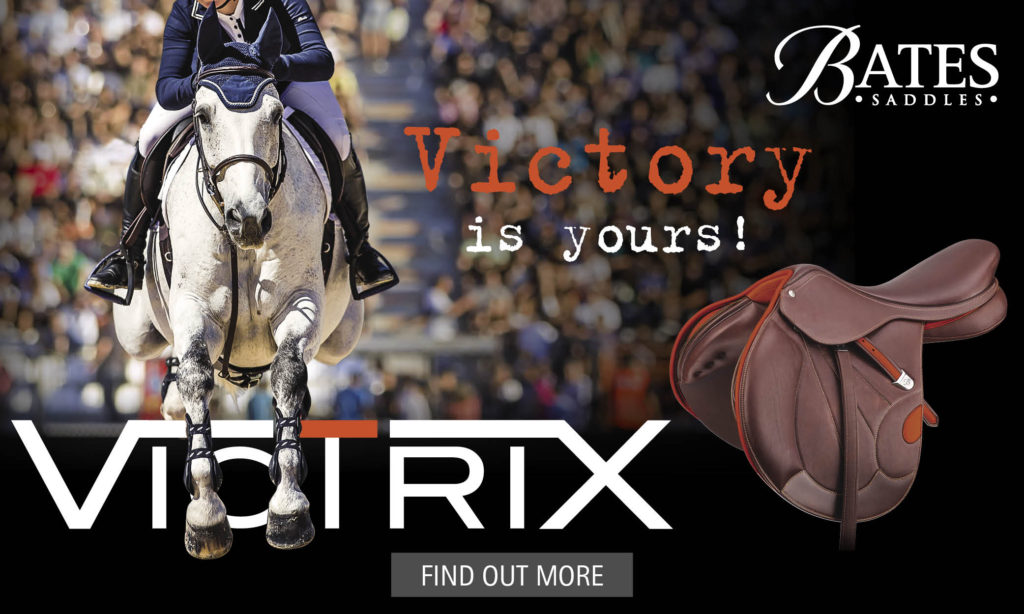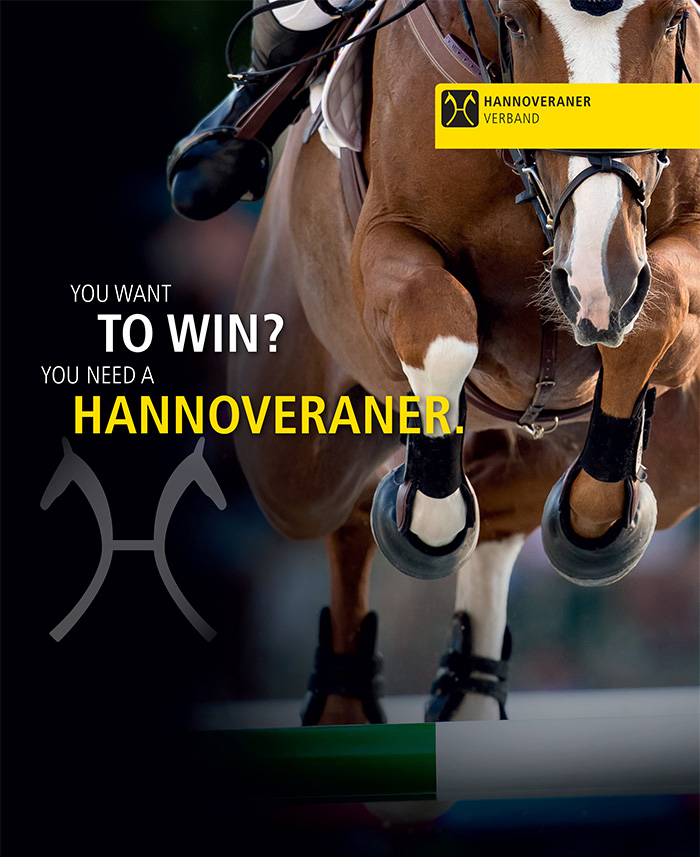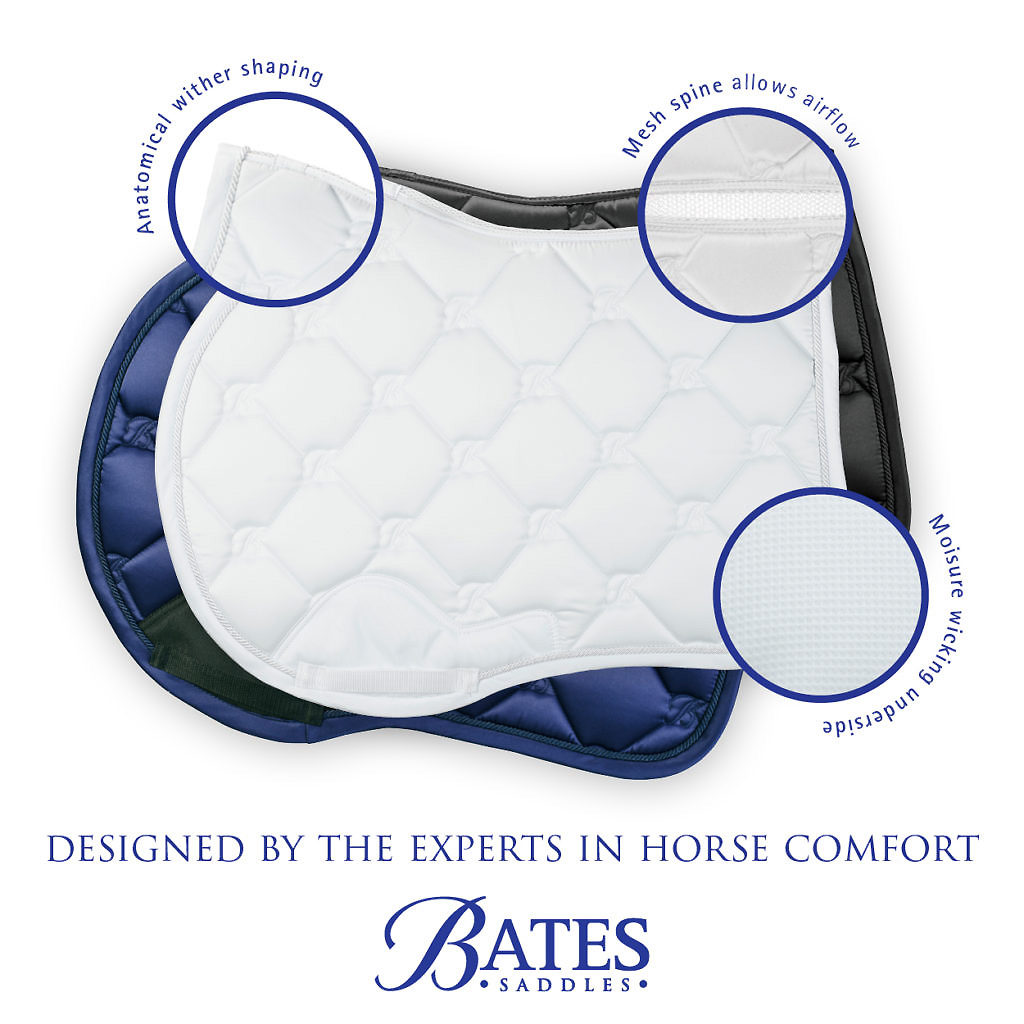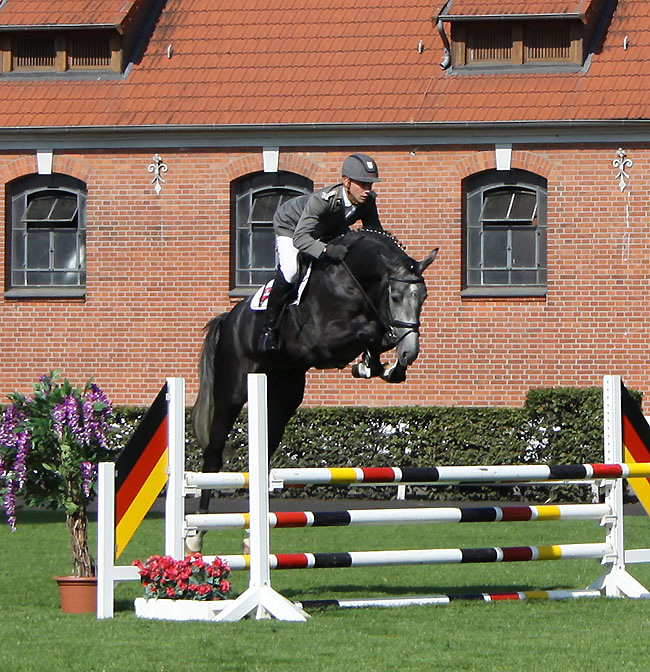Rebecca Ashton catches up with the Kiwi superstar on a visit home to
New Zealand… she also took the photos
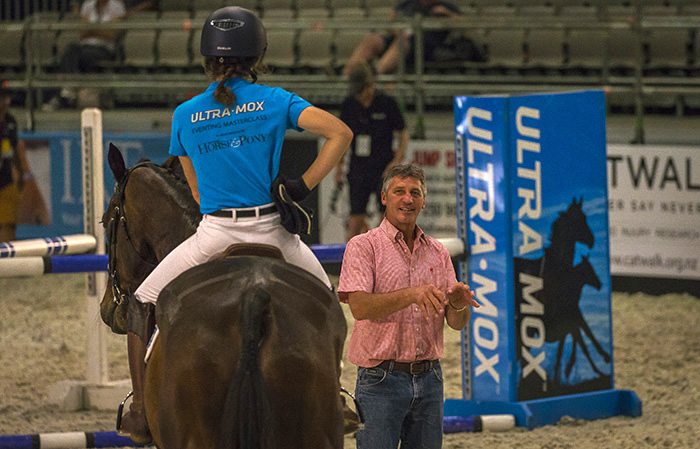
One of the stars at Equitana Auckland was hometown hero Andrew Nicholson. Andrew was back in his home country, with family on hand to help popping up jumps and running around as part of the support crew for his Masterclass.
The Badminton champion provided some well-thought out flowing exercises to help improve cross country riding with a focus on the horse’s balance and rideability.
The first couple of horses demonstrating were on opposite ends of the spectrum in terms of age, but showed the audience some basic exercises, designed to get both horses and riders thinking and balanced. Anna Beverley had 17-year-old 4* Australian export, Kirby Park Allofasudden, while Denise Rushbrook was on six-year-old Astek Gadzuks.
All sessions began with flat work: “Trot around like you would at home. A little deeper so you say to the horse, ‘Listen to me and don’t look at the people’. Take them out into the corners and use the space so when it comes to jumping they’ve seen the whole arena.”
“This work is very important for both the cross country and the showjumping. Keep the quarters pushing forward into the contact. The more you shut the front end, the more tense they get, however, keep a little contact and don’t be afraid to hold the rein. In cross country, you can’t afford to lose your contact.
“Now canter…forward…so they can relax. Don’t contain the power. Move it out, then bring it back again. Just a short forward, and then bring him back, just don’t shut him down straight away. Don’t think that holding them together is collection. We want to encourage them to use their power, but still be rideable. Yes, then just sit him down a bit. Can you feel how they’re happy to stretch, and the back comes up?”
Then it was on to some simple exercises that Andrew does himself for cross-country tuning. There were four jumps evenly spaced around the circle line. The jumps were all single poles between the jump wings, so if one was knocked it wasn’t a big disaster. “Don’t worry about how many strides you do, it’s about rideability. It’s what you have to do on the cross country course when you make a mess of the distance and we have to fix it. Focus on the rhythm.”
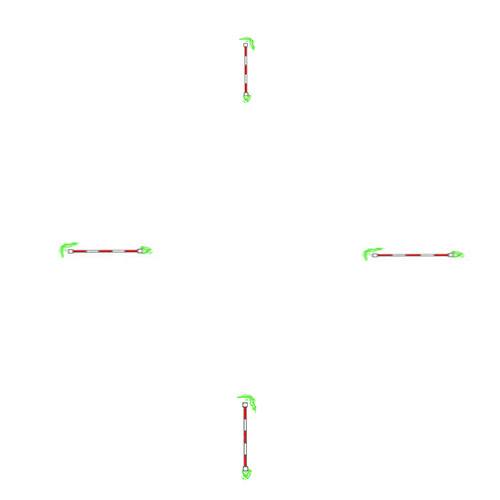
Exercise number 1, four poles on the ground on the circle line
The poles started on the ground. “It’s not so easy, is it? Look at the next pole and then the next one. Once you get two strides from the pole, there’s nothing you can do, look at the next one. Soft. He’s got four legs, he’s got to look after them. Don’t be obsessed with the one pole you’re jumping. Keep your rhythm.”
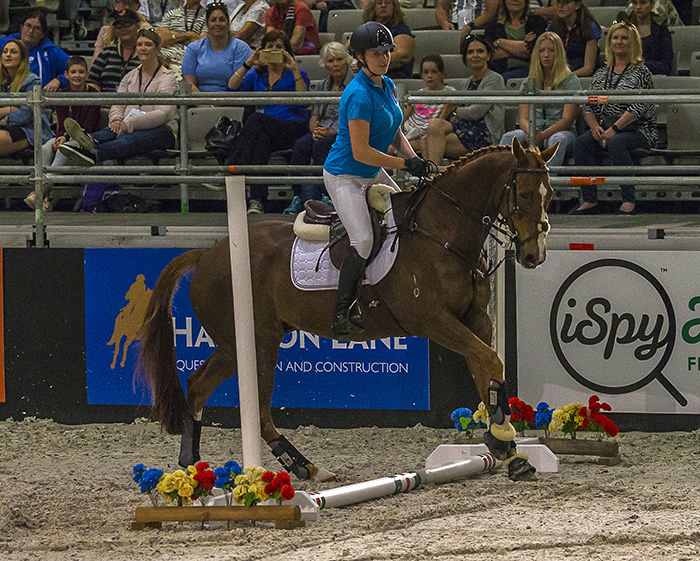
Then the poles were put up and Andrew’s wife Wiggy was in action with the rest of the ground crew, “My wife’s a good runner, isn’t she?!” quipped Andrew.
The horses were off again with Andrew helping. “It’s five strides, five strides, five strides, five strides. Take your eye off the first one when there’s nothing you can do about it. Can you see how the horses starts to relax and go even, and then you can start to see the distance? Keep calm and feel the canter. Keep the distance with your eye. You have to learn to be able to fix the distance.”
next the poles go up
The poles gradually got higher and higher before they were set alternatively low, high, low, high. “So, the distance to the little one will be more difficult now. I always find it’s easier to start the exercise with the bigger ones first, but it’s up to you.”
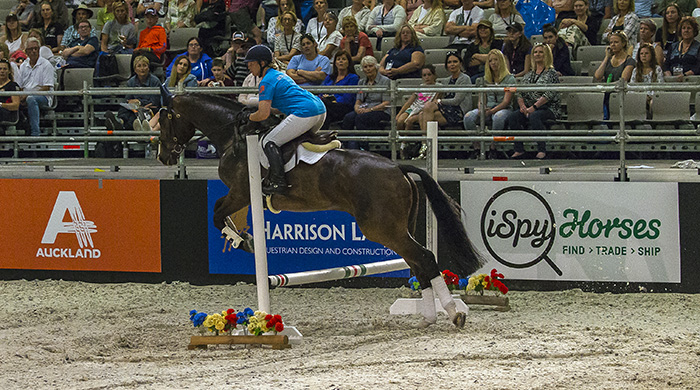
Denise and Astek Gadzuks
The strides from the big jump to the small jump were the trickiest and the riders were instructed to, “….do something. Look. Sit.”
To Denise, “So they’re like us, some are better one way than the other. He’s better right, so go left again.” Anna had to focus on not going fast, just to keep the same rhythm before her older horse started to relax.
After that exercise was ridden both ways a couple of times, there was a progression. There was an oxer in the middle of the circle, just off centre.
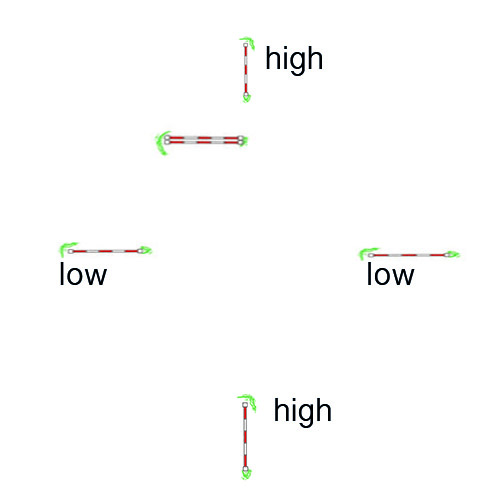
The exercise was to jump the two high verticals on the circle right and then over the oxer, then turn left and over oxer again. The riders had to sit in the saddle and balance the horses back in between the jumps, keeping a powerful but controlled canter.
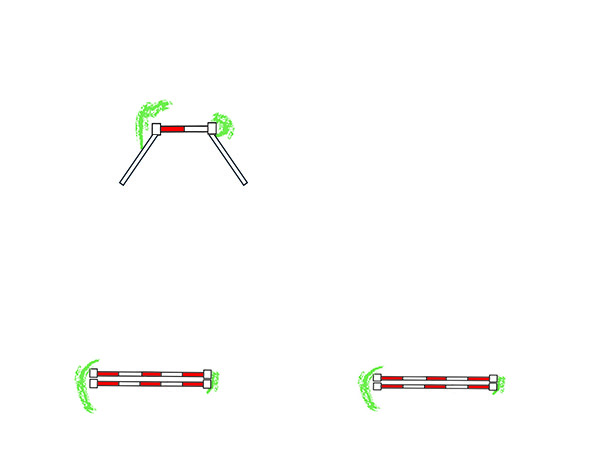
Then it was time to look at two oxers and a skinny.
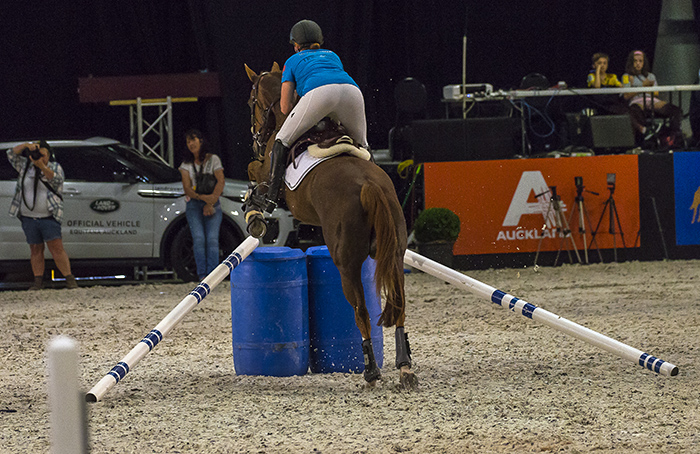
To Anna, “Don’t have the canter too dead. You need something to sit on, but just sit and balance. Five, six and then four strides. Keep your contact. Don’t sit up like in dressage, just sit a little behind him gently to keep him forward.” When things got a bit fast, “You don’t need to run at a jump. The jump is not going to move. You have plenty to time. Just keep the rhythm.”
more exercises follow
Then the exercise was executed in the opposite direction. For Denise, the guide poles into the skinny were lowered. “Keep your leg on into the barrels because he’ll notice we’ve changed it. Sit on him so you can balance and turn. You stayed nice and even in the rhythm. That was very good.”
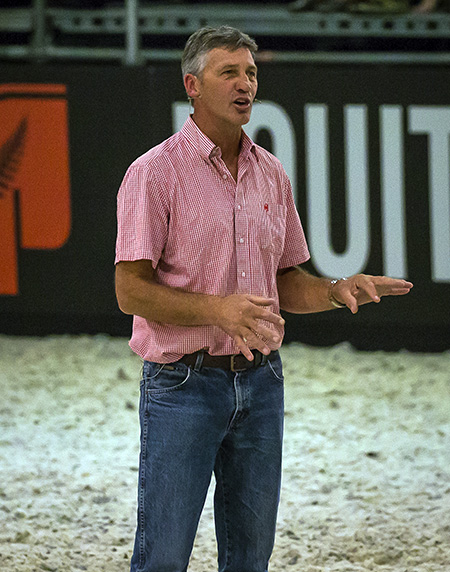
And to sum up the session, “The main thing about cross country is to be positive and controlled.”
The next session consisted of three riders to show progressively more challenging exercises. Amanda Illstone, who has ridden 2 and 3* in the UK was on her 1* horse, Verdelho; Vicky Browne-Cole rode her 2* horse Eli, and Samantha Felton rode Ricker Ridge Sooty GNZ who is also 2*.
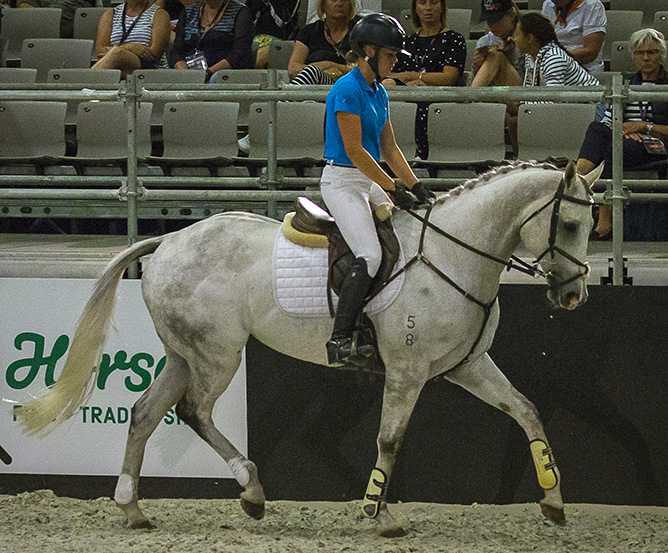
Vicky Cole-Browne and Eli
Yet again, the session began with basics on the flat and Andrew encouraged, “Don’t be scared to go up the wall and into the corners of the arena to show them everything. Don’t be frightened to ride forward a bit more. Think about the hind legs before you think about the head position.
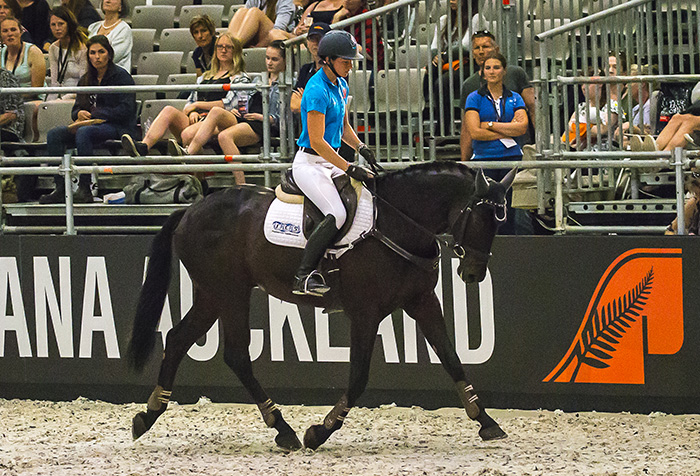
Sam Felton and Sooty
Ride a little more forward, you don’t want to go faster but just have a bit more power. It’s not about their head down on the ground, but stretching their back and lifting their shoulder. Don’t worry if it’s not all fancy. It’s not the show ring. You’re warming up and making them more rideable. Soften in your own body as well.”
For the first jumping exercise, Andrew added two plank jumps parallel and close to the wall to work on control while riding towards and away from the wall. Why planks? “The planks, I don’t know why, they seem to be able to knock them down and not get frightened and come around again and jump them well so it works better than poles in this instance.”
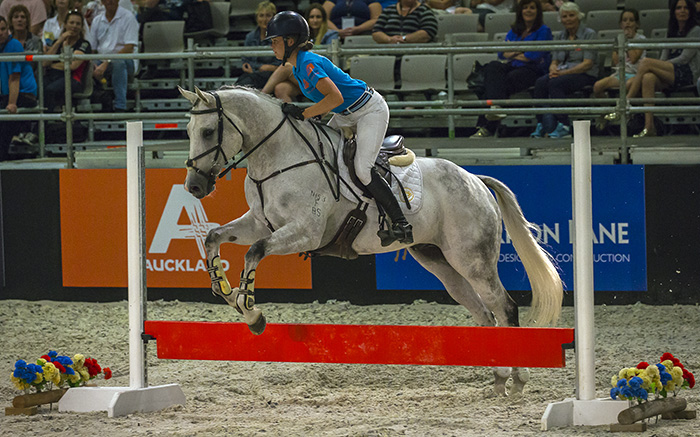
He wanted Sam to use her body more gently to turn and to really use the space, “Don’t worry if you scratch the cars! (the sparkling new sponsors’ cars were filling up the arena corners) Don’t shut the canter down too much. I think if you just sit just a little more behind, you’ll be able to turn more smoothly.”
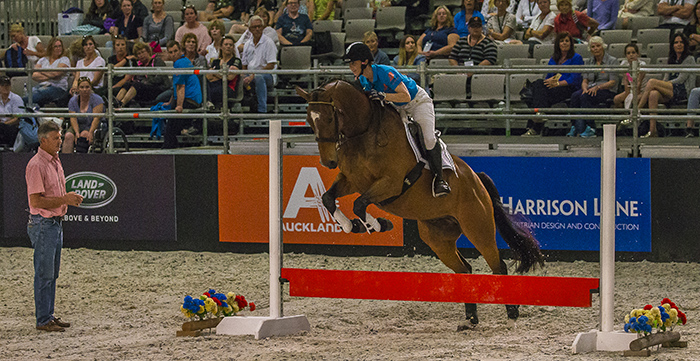
When Amanda knocked a few, she was instructed to keep going. “Keep jumping until he gets the hang of it. It just shows you don’t have to build them big to make it difficult.” The closeness of the planks to the wall was challenging in itself.
Vicky needed just a little more oomph without speed. “Push him up so you have more in your hand, not so he’s faster, but so you have something to sit on. Take your time. Don’t lean backwards but don’t chase him either. Quiet, pop over, sit and turn.”
“If I did this at home I’d probably have six planks and have them two metres closer to the wall. They stop shooting off afterwards because they’re not sure if they’re going right or left.”
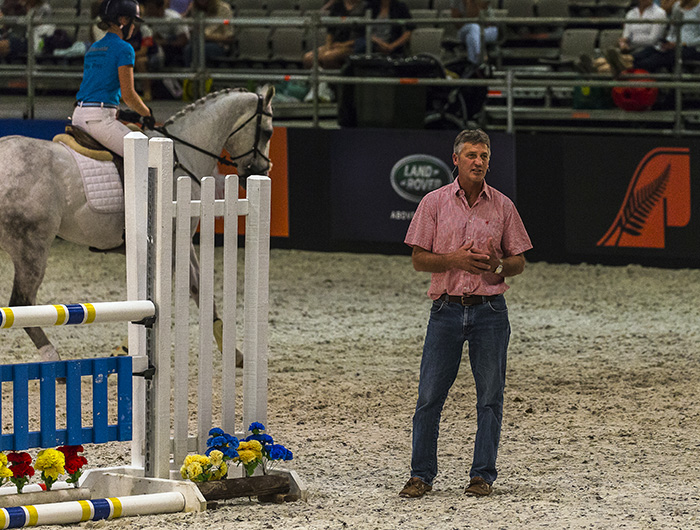
The planks were raised for the second go around.
Sam was encouraged to sit down and get her horse to respond to her weight rather than her rein, and Amanda needed to push down in her stirrups more for a more secure lower leg.
Then the vertical was added to the two planks. Jump one plank away from the wall and then to the vertical and then the second plank into the wall, like a triangle formation.
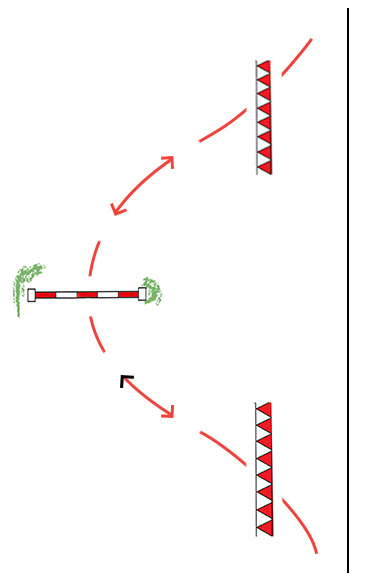
Sam was helped, “Take your time. Pop and sit. When you land from the vertical, it’s important to keep your body a little more up and wait for the turn, but still keep the horse forward and not stopping so you can keep the rhythm.”
Concluding the session, “I would do a lot of this sort of schooling at home. You’re training the rideability and the reaction time. Think about when you’re out cross country, you jump a big oxer, land, four strides to the left, jump then three strides to the right.”
A couple of 3* horses concluded the Masterclass with Chloe Phillips-Harris on Cor Jet who she’s had since a 3-year-old and Bundy Philpott and Tresca GNZ who have been together since the horse was four.
You guessed it, they started with flat work, but correct flat work with Andrew repeating the same advice, “….and don’t forget to get up against the wall so they get used to going into corners. Work the back end. You can let him come down a little in front so he can stretch and use his back.
A bit more forward in the canter so later you have something to sit down. Don’t try to ride with nothing in your hand. It needs to be quiet and steady, but you need it. Keep the hindlegs pushing. Forward and back so they accept you riding the canter strides. It’s simple, basic stuff and they need to do it when you want them to.”
The jumping exercises this time were more orientated to big competition preparation, “This is what I would do for training just before I go to a big event no matter what level. Test that you can sit and turn, without losing the stride. Teach them to land and then ride forward, so they start to take you in a very polite way.”
The girls started with a vertical to get their horses warmed up with Andrew adding the odd tip, “Don’t worry if it’s not all pretty. Jump, sit, but keep him forward,” and “as you jump, put your leg a little bit more around him so you stay secure.” If the pole was knocked down, it was important to just keep going and when the rider was bringing the horse back to the walk, Andrew wanted a good canter to walk transition with the horse on the aids so it remained listening to the rider rather than a dribble to the walk through the trot..
An oxer was then added on the opposite long side of the arena to get the horses just bowling along between jumps.
Andrew wanted Bundy to focus a little differently, “Rather than worry about the lead, just ride it forward and straight. Have a big canter and sit on it to keep it balanced. You want the horse to take you into the jump. You don’t want them to drop the bit and run with their body.”
Chloe was also asked for some refinement, “Sit against it but gently. It’s ok if you have to play and balance a little rather than having them run towards a jump upside down.”

Then the “course” got a little more interesting. Vertical on one long side, oxer on the other, full arena back to a corner, change direction, full arena second corner then centre oxer, corner, centre oxer, second corner (The corners had longer front poles). The two girls were handling things beautifully so Andrew added some changes; vertical, two oxers before two corners to the oxer and then four strides to the corner. “…so you have something in your hand to sit on” and then Andrew wanted it jumped in reverse without stopping, “…so they’re not stopping and starting so you get into some sort of rhythm and feeling.” Andrew wanted good, accurate turns to help get that consistent rhythm.
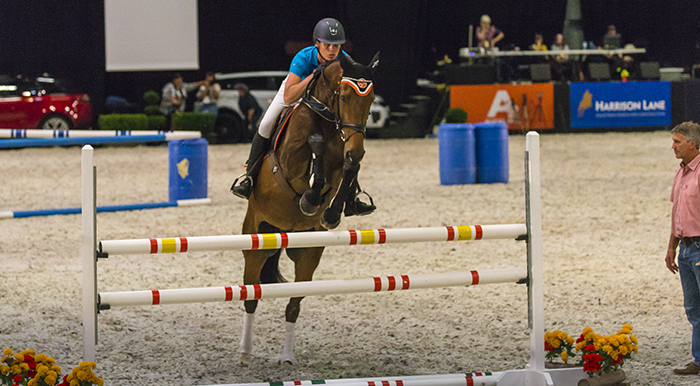
Bundy over the vertical
The last test was to have a look at the skinny: Middle oxer, corner, middle oxer, skinny, middle oxer, corner.
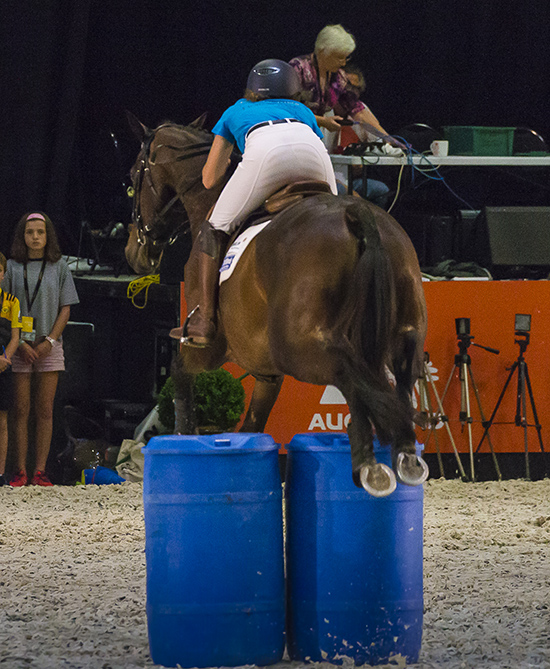
Chloe over the skinny with guide poles on the ground
When Tresca decided the skinny was a monster, poles were used to lead the horse into the jump, which then progressed to the poles lying on the ground. Success. Chloe needed to keep the canter powerful and balanced rather than closing the canter as this encouraged the horse just to get faster. Yes, dressage training with speed control really is necessary!
To conclude, Andrew wanted the audience to really understand how the exercises progressed, and taught the riders how to balance the horse with their body to keep a bold canter with good rhythm, rather than making things fast, flat and chaotic or backing up and fiddling too much. They exercises also helped the horse understand how to land, and move forward and away from the jump on the first stride rather than get stuck. “Then things don’t go wrong.”
Getting insights of the behind the scenes training from greats such as Andrew really is a privilege. His exercises flowed and never over-challenged the horses or riders.
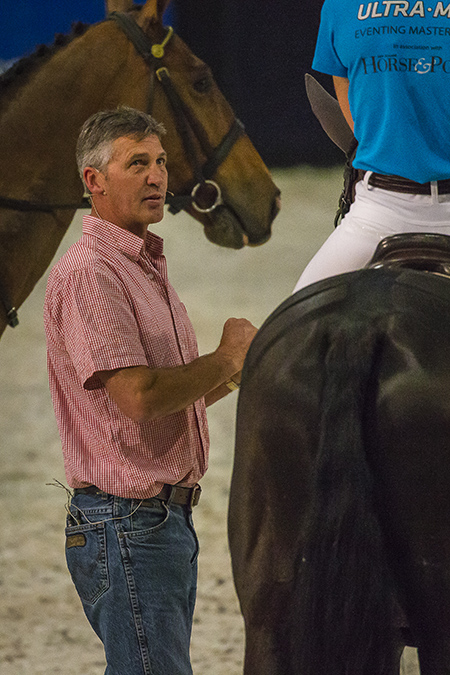
Breeding an eventer? There’s a selection of the best stallions in the world available from International Horse Breeders, choose from stallions like Balou Pagio go to www.ihb.com.au
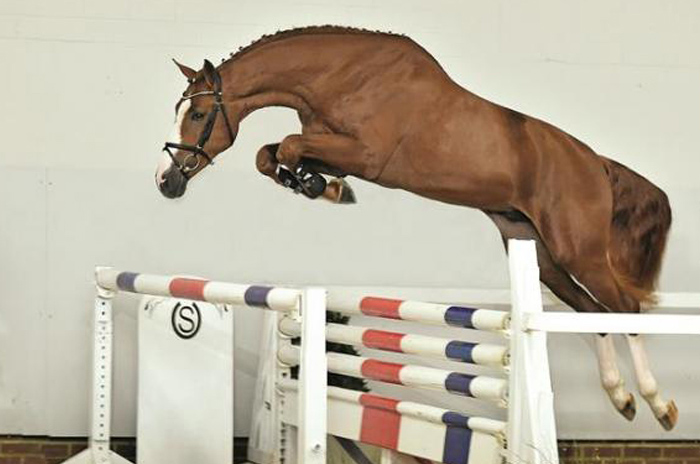
Or Diacontinus

